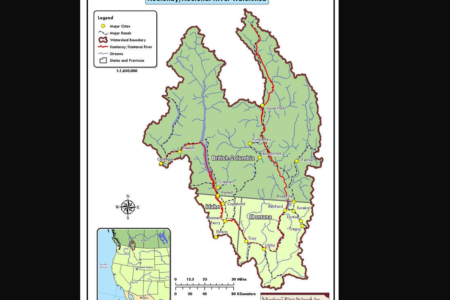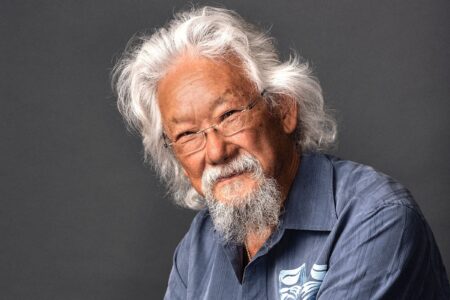Could Revelstoke's school success be replicated in Rossland?
The provincial government’s first Neighbourhoods of Learning (NOL) school will be setting up shop in Revelstoke over the next year. With much talk in Rossland around the NOL concept as a way to save our small schools, interested eyes will certainly be keeping watch over Revelstoke’s project as it progresses.
Revelstoke, with a population of roughly 8,000, currently supports four elementary schools and one secondary school. Six year ago, the city and school district made the business case to consolidate two of their elementary schools into one new central elementary school. Originally slated to be constructed on its own timetable, Revelstoke also successfully lobbied for a new secondary school. That process happened outside the realm of Neighbourhoods of Learning, which is where their case differs significantly from Rossland’s. The cross-over in their plan and what Rossland is hoping to do with our schools is in the process they went through to establish their NOL project.
Wanting to test the NOL concept, the BC government put out a call for proposals to pilot the project. With two new schools already approved, Revelstoke applied for the pilot program on the basis that they were a remote community and not able to drive to nearby communities for services and also that they were essentially a blank slate. They had not been thinking about NOL; nor had they started any work down that road. Consequently, they had the opportunity to run through the process from square one.
This past November Premier Gordon Campbell announced Revelstoke’s selection as the pilot project for NOL as part of their two new schools. “Our vision for the future of education in British Columbia is one where educational services and community resources are brought together under one roof to better support families and learners,” said Campbell.
“The basis of our submission was that we didn’t have any idea what we would want for a neighbourhood learning center, but the pilot offers us the opportunity to have a district start from nothing, roll up our sleeves and develop a process to service projects of interest in the community,” commented Anne Cooper, Superintendant of schools for the Revelstoke school district.
What the Neighbourhoods of Learning project will mean for Revelstoke is an additional 15% square footage for each school to accommodate complimentary community services and programs.
With the announcement made, the difficult task of selecting which programs/services could be incorporated into the school began. It was important to choose partners that would create lasting financial benefits for the community as well as making the school more efficient. The key to Revelstoke’s success in this progress was communication, communication, communication.
From the initial announcement the school board attempted to maintain a transparent process, to get everyone possible involved in the project, and to keep everyone well informed of the process and progress.
“Once we were selected, we had a massive community-wide information blitz to let everybody know that we were selected as a pilot. We invited every agency, group and service delivery provider that we could think of to the official announcement. We generated a lot of excitement around it. Then we ensured that we developed an e-mail mail out describing that we were selected , the highlights of the proposal and what we were attempting to accomplish as far as deciding what would go into the schools to every service agency and every group possible in the city.”
Following a huge effort to solicit feedback from anyone and everyone in Revelstoke about what services/programs could be incorporated into the project, the group categorized all of the possible partners and ideas into arts and culture, recreation and sports, and early childhood development.
From there, the key to their success, as described by Cooper, was developing a key set of criteria on how possible inclusions in the school would be evaluated. Through discussions with stakeholders, the city, and residents, the school group adopted the following principles. Any group to be included in the NOL must:
- Provide additional community benefits
- Enhance liveability –Revelstoke more attractive as place to live
- Be in jeopardy due to current facility arrangements
- Have a record of success
- Run a program that can function in multi-use space
All submissions were filtered through that criteria, and in the end a workable set of programs and services to meet the needs of Revelstoke was developed and agreed upon.
Ultimately, the new secondary school (with an enrolment of 500 students) will include a 275-seat theatre and will offer co-ordinated health services for vulnerable teens that include an on-site social worker, mental health services and substance abuse prevention.
The new elementary school will become B.C.’s first early-learning hub, designed to provide seamless services for children from infancy to school age. The early-learning hub will include: a Strong Start BC program, two state-of-the-art childcare centres, an early-learning library and a child-care resource and referral program. The school will become the new home of programs that provide medical, dental, literacy and community services to students and their families. Another exciting feature of this school will be the addition of an acrobatic centre. Currently, twenty per cent of Revelstoke’s student population participates in acrobatics so the much-needed facility was a natural fit for the project
While $48 million had already been committed by the province for the two new schools, the awarding of the NOL pilot project brought in an additional $5 million to offer the additional community services.
What is to be learned by Rossland from this effort? While we do not have any hint of approval of funds for school renovations or school replacement, we can learn from Revelstoke’s process and work to make our existing schools more efficient.
“I really believe the process went fairly seamlessly because of the process we developed along the way. We set out clear criteria and a clear time line for the project, making sure all the way through it that we were transparent and communicating everything to everyone,” added Cooper. “When you specifically target only a few groups here and there that you think might work before going through the process you end up with a lot of unhappy people along the way. It was a huge task but we literally started with everything possible and then shook it down through our criteria filter. In the end we had a large buy-in from the community which has resulted in a successful project thus far.”
Even without provincial capital funding for our schools, could Rossland not follow Revelstoke’s path and start implementing cost-saving efficiencies and perhaps add new services and programs through those efficiencies?
This is very close to the core function of the Visions for Small Schools group in Rossland. VSS has been diligently working behind the scenes to try and make this dream a reality.
The problem as it stands is that Rossland has too much school space and not enough students to fill it. Going through Revelstoke’s process, Rossland could potentially and right now, examine what space we have available in the schools, put together an exhaustive list of who could fit in that space and who needs space, develop a similar criteria and find some cost saving efficiencies to fill extra space and meet the needs of existing service groups in town.
What do you think? Could Rossland pull off a similar process to Revelstoke’s without provincial assistance to make our schools sustainable?


























